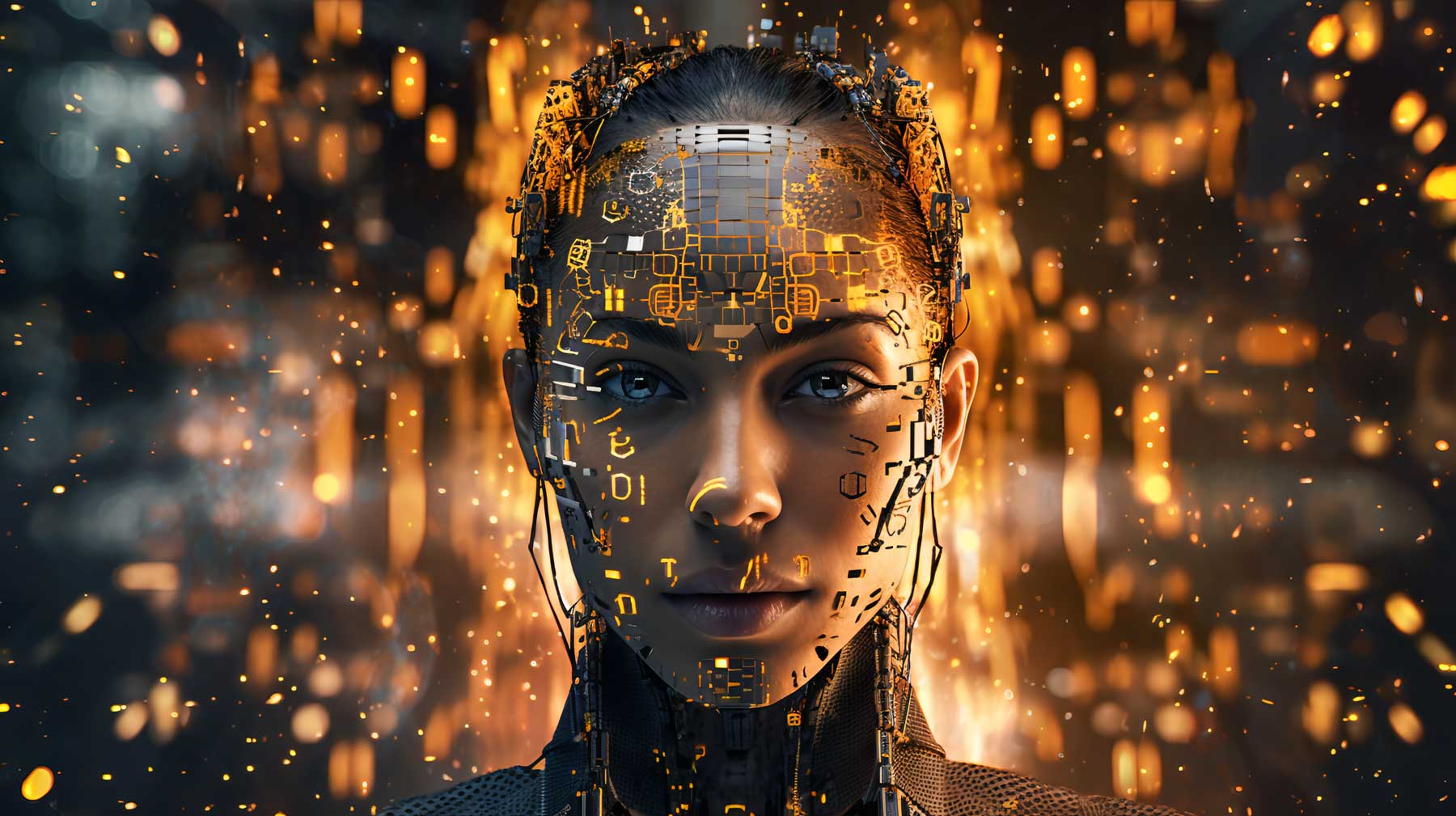In recent years, artificial intelligence (AI) has made significant strides in the world of image generation, including AI nudes.
From breathtaking landscapes to lifelike portraits and abstract art, AI-generated images are becoming increasingly sophisticated and widely used across various industries.
The Evolution of AI-Generated Images
The journey of AI-generated images dates back to the mid-20th century when early computer scientists and artists began experimenting with digital art. However, the true revolution came in the 21st century with the advent of deep learning and generative adversarial networks (GANs). GANs, introduced by Ian Goodfellow in 2014, have played a pivotal role in advancing the field.
GANs consist of two neural networks: a generator and a discriminator. The generator creates images, while the discriminator evaluates them. They engage in a continuous back-and-forth process, with the generator improving its ability to create realistic images and the discriminator refining its judgment. Over time, this dynamic competition results in AI-generated images that are increasingly convincing and indistinguishable from those created by humans.
Applications of AI-Generated Images
- Art and Creativity: AI has opened up new avenues for artists and designers to experiment with their creativity. Artists can collaborate with AI models to generate unique pieces of digital art, combining their vision with the capabilities of AI to produce stunning and innovative works.
- Entertainment and Media: The film and gaming industries have embraced AI-generated images to create realistic special effects, breathtaking landscapes, and even entire characters. This technology has the potential to reduce production costs and enhance the visual quality of entertainment content.
- Product Design: In product design, AI can generate 3D models and prototypes, enabling designers to explore various concepts quickly. This can accelerate the product development process and lead to more efficient and cost-effective design iterations.
- Medical Imaging: AI-generated images have proven invaluable in the field of medical imaging. AI algorithms can enhance and analyze medical scans, helping doctors diagnose diseases more accurately and aiding in treatment planning.
- Architecture and Urban Planning: Architects and urban planners use AI-generated images to create realistic architectural visualizations and urban landscapes. This helps clients and stakeholders visualize the final designs, making the decision-making process smoother.
- Fashion and Design: AI can generate fashion designs and patterns, offering inspiration to fashion designers. It can also be used to create digital clothing for virtual try-ons in e-commerce, revolutionizing the online shopping experience.
- Advertising and Marketing: Marketers leverage AI-generated images to personalize advertisements and marketing materials. By tailoring visuals to individual preferences, companies can increase engagement and conversion rates.
Ethical Considerations
While AI-generated images hold great promise, they also raise ethical concerns that must be addressed:
- Misuse and Manipulation: AI-generated images can be used to create deepfakes, where individuals’ faces are superimposed onto other bodies (such as AI nudes) or used for malicious purposes. This raises concerns about misinformation and privacy violations.
- Intellectual Property: The question of ownership and copyright regarding AI-generated art remains unresolved. Who owns the rights to a piece of art created in collaboration with AI? Legal frameworks must adapt to address these issues.
- Bias and Discrimination: AI models trained on biased data can perpetuate societal biases and stereotypes. Ensuring diversity and fairness in AI-generated images is essential to avoid reinforcing harmful stereotypes.
- Dehumanization: As AI-generated images become more realistic, there is a risk of dehumanizing real individuals. People may be skeptical of photographs and videos, further eroding trust in media.
- Job Displacement: In creative industries like graphic design and illustration, there are concerns about job displacement as AI becomes more proficient at generating images. Balancing the benefits of automation with the need for employment opportunities is a challenge.
Future Prospects
The future of AI-generated images is bright, with several exciting developments on the horizon:
- Increased Realism: AI models will continue to improve in creating images that are virtually indistinguishable from those captured by cameras. This will have profound implications for various industries, including entertainment and virtual reality.
- Customization: AI will enable highly personalized content generation, allowing individuals to have art, fashion, and other designs tailored precisely to their preferences.
- Collaboration: Artists and designers will increasingly collaborate with AI models, pushing the boundaries of creativity and innovation. The synergy between human creativity and AI capabilities will lead to remarkable creations.
- Ethical AI: Researchers and policymakers will work to develop ethical guidelines and regulations for AI-generated images to address concerns related to privacy, bias, and misuse.
- AI-Enhanced Education: AI-generated educational materials, including interactive diagrams and visual aids, will enhance the learning experience, making complex topics more accessible.
Why Are AI Nudes a Problem?
AI nudes are a growing concern, as they can potentially be used to tarnish someone’s reputation or be used to extort wealthy or famous individuals. This issue is likely to persist and become even worse as AI becomes more advanced.
In Conclusion
AI-generated images are at the forefront of technological innovation, offering a world of possibilities for artists, industries, and society at large. While they raise ethical questions and challenges, the potential benefits of AI-generated images are undeniable. As technology continues to advance, it is essential that we navigate this evolving landscape with ethical considerations and responsible use in mind, ensuring that AI-generated images contribute positively to our lives and the creative industries.

